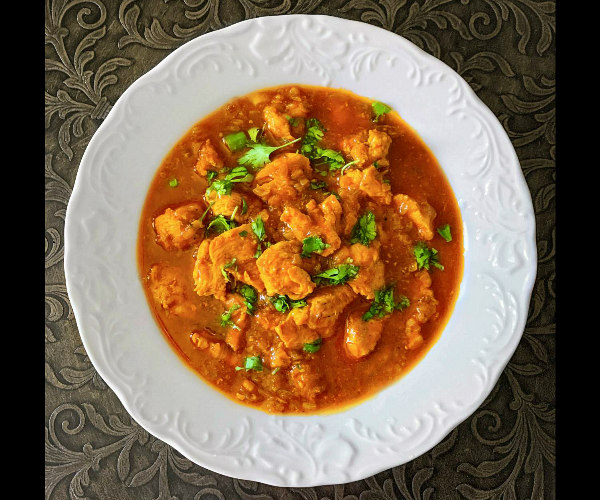How to Make Authentic Indian Curry at Home

Imagine the tantalizing aroma of Indian spices wafting through your kitchen, transporting you to the bustling streets of Delhi or the serene backwaters of Kerala. Making authentic Indian curry at home is not just about cooking; it's about creating an experience that engages all your senses. Whether you're a seasoned chef or a culinary novice, this guide will help you master the art of traditional Indian curry, right in your own kitchen.
Understanding Indian Curry
Indian curry is more than just a dish; it's a celebration of flavors, textures, and traditions. The term "curry" encompasses a wide range of dishes, each with its unique blend of spices and cooking techniques. From the rich, creamy butter chicken of North India to the coconut-infused fish curries of the South, every region has its own signature curry.
The Essence of Indian Spices
The heart of any Indian curry lies in its spices. From the pungent aroma of cumin to the warmth of turmeric, each spice plays a crucial role in creating the perfect balance of flavors. Some essential Indian spices include:
- Cumin: Adds a nutty, earthy flavor.
- Coriander: Provides a citrusy, slightly floral note.
- Turmeric: Gives curry its vibrant yellow color and anti-inflammatory properties.
- Garam Masala: A blend of spices like cardamom, cloves, and cinnamon, adding warmth and depth.
Key Ingredients for Authentic Indian Curry
While spices are the soul of Indian curry, the right ingredients are the foundation. Here are some key components you'll need:
- Onions and Garlic: The base for most curries, providing a sweet and savory foundation.
- Tomatoes: Adds acidity and richness.
- Ginger: Provides a warm, zingy flavor.
- Chilies: Varying levels of heat, from mild to fiery.
- Coconut Milk or Cream: Adds richness and a creamy texture, especially in South Indian curries.
Step-by-Step Guide to Making Authentic Indian Curry
Preparing the Spice Base
The first step in making an authentic Indian curry is preparing the spice base. This involves toasting and grinding whole spices to release their flavors.
- Toast the Spices: Heat a dry pan and add your whole spices (cumin seeds, coriander seeds, etc.). Toast them until they release their aroma.
- Grind the Spices: Use a mortar and pestle or a spice grinder to grind the toasted spices into a fine powder.
Creating the Curry Paste
The curry paste is the backbone of your dish. It combines the spices with aromatics like onions, garlic, and ginger.
- Blend the Aromatics: In a food processor, blend onions, garlic, and ginger into a smooth paste.
- Combine with Spices: Mix the spice powder with the aromatic paste to create your curry paste.
Cooking the Curry
Now that you have your curry paste ready, it's time to cook the curry.
- Sauté the Paste: Heat some oil in a pan and sauté the curry paste until it turns golden and the raw smell disappears.
- Add the Main Ingredients: Whether you're making a vegetable curry or a meat-based one, add your main ingredients and cook until they are tender.
- Simmer with Liquids: Add water, coconut milk, or tomato puree, depending on the recipe, and simmer until the curry reaches the desired consistency.
Finishing Touches
The final step is to add the finishing touches that elevate your curry to the next level.
- Garnish: Sprinkle with fresh cilantro, chopped green chilies, or a dollop of yogurt.
- Serve: Serve your curry hot with steamed rice or naan bread.
Tips for Perfecting Your Homemade Curry
Balancing Flavors
Balancing the flavors is key to a successful curry. Make sure to taste as you go and adjust the seasoning accordingly.
Using Fresh Ingredients
Fresh ingredients make a world of difference. Use fresh herbs, spices, and vegetables for the best results.
Patience is Key
Cooking curry is not a rush job. Allow the flavors to develop slowly over low heat for the best results.
Conclusion
Making authentic Indian curry at home is a journey of discovery and delight. From the aromatic spices to the rich, comforting flavors, every step is an adventure. Whether you're cooking for a special occasion or a cozy night in, this guide will help you create a dish that's not just delicious but also a celebration of Indian culinary traditions. So, roll up your sleeves, gather your spices, and let the magic of Indian curry unfold in your kitchen.
FAQs
What are some common mistakes to avoid when making Indian curry?
- Overcooking the spices can make them bitter.
- Not balancing the flavors can result in a curry that's too spicy, too sweet, or too bland.
- Using stale spices can diminish the flavor.
Can I use store-bought curry powder instead of making my own spice blend?
- While store-bought curry powder can be convenient, making your own spice blend allows you to customize the flavors and ensures freshness.
How can I make my curry less spicy?
- Reduce the amount of chilies or chili powder.
- Add more coconut milk or yogurt to balance the heat.
What are some good side dishes to serve with Indian curry?
- Steamed rice, naan bread, raita (yogurt side dish), and vegetable side dishes like aloo gobi (potato and cauliflower) are great accompaniments.
Can I freeze leftover curry?
- Yes, curry can be frozen for up to 3 months. Make sure to store it in an airtight container and thaw it in the refrigerator before reheating.


By following these steps and tips, you'll be well on your way to creating a delicious and authentic Indian curry that will impress your family and friends. Happy cooking!
0 Response to "How to Make Authentic Indian Curry at Home"
Post a Comment